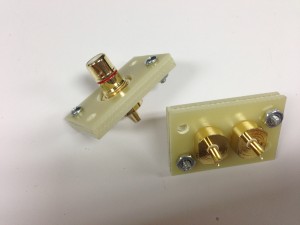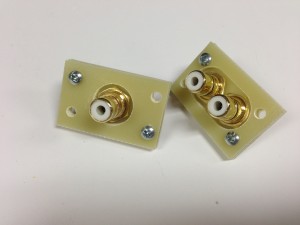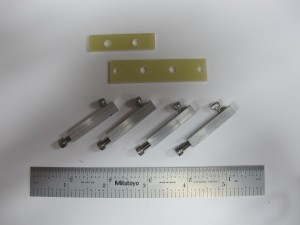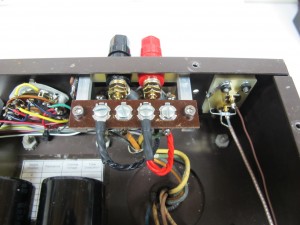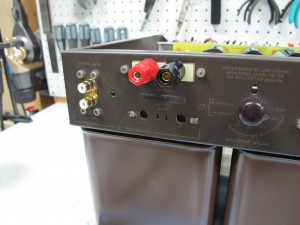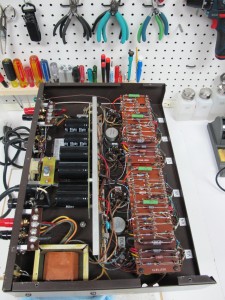The Harman Kardon Citation II is a great amplifier to be sure, but there are some limitations to the design. One of the problems that has bothered me over the years are the terminal strips and the poor quality input jacks in the original design. Many years ago I solved the input jack problem with new FR4 input boards that hold modern high-quality RCA jacks.
As seen in the photo’s above, a set of three layers of 1/16″ thick FR4 fiberglass was used to provide a platform to mount modern RCA jacks. the four holes at the corners of the boards mate perfectly with the mounting holes in the Citation II chassis. The bottom layer has smaller holes designed to accept the RCA jack and nut. The next two layers act to space the mounting nut away from the amplifier chassis to prevent the RCA return connection from being shorted to the chassis. This simple change allows high quality connections to the amplifier without modifying the metalwork of the amplifier at all.
The second modification is aimed at making the speaker connections more reliable and easier to use with a variety of modern speaker cables. The original amplifier terminal strip provides four connections for each speaker, a ground return and three different taps on the output transformer for three different nominal speaker impedances (4, 8, and 16 ohms). The chassis cutout for this terminal strip is fairly small and would at most provide room for three connections. My solution is to move the terminal strip inside the amplifier chassis and provide a pair of modern 5-way binding posts. This was accomplished with a set of FR4 fiberglass spacers, much like the RCA jack spacers. This time two layers of 1/16″ fiberglass was used. The back layer is the same size as the original terminal strip and mounts tot he chassis using the same mounting points The front layer acts purely as a spacer to account for the chassis thickness and allows the 5-way binding post bases to sit flush on the spacer rather than straddle the cutout in the chassis.
The set of spacers is held to the chassis by a bolt from the outside, and rather than a nut on the inside, a threaded bar is used. This bar is made of 1/4″ square section aluminum bar stock, which is drilled and tapped (6-32) on one end and drilled and tap in the side at the opposite end as seen in the picture above. This allows the bar to act as a nut to hold the 5-way binding post plates on the chassis and also provides a secure mounting point for the terminal strip inside the chassis as seen in the photo above.
The tweeter-saver components as mounted to the back of the terminal strip as they were in the stock amp, and the feedback and ground reference wires are attached to the back of the terminal strips as well. However, the ground reference lead does not go tot he chassis as it did in the stock form; now it runs back to a common power supply ground.
A set of short leads with spade lugs on the end of them attaches the 5-way binding posts to the original terminal strips inside the amplifier. The means that to change speaker taps, the amplifier has to be inverted and the 5-way binding post wire moved to the appropriate lug on the terminal strip. However, in return for the inconvenience, the amplifier speaker connections are more robust and useful with many modern speaker cables. And the chassis metalwork is never touched.

